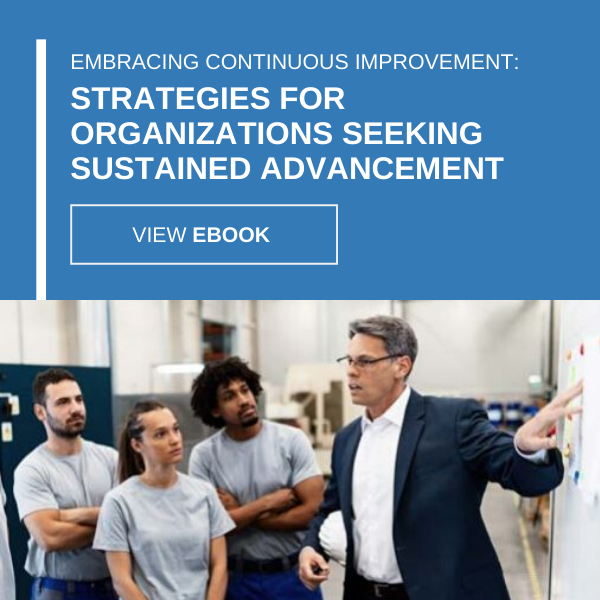
5 Secrets to Driving Behavioral Change
Businesses seeking to improve internally often focus considerable energy on trying to transform shop-floor operations through the introduction of new equipment, production processes or software. While such additions can surely lay the groundwork for change, these modifications alone cannot catalyze true operational transformation. The employees responsible for managing mission-critical production workflows must change as well. Tools are only as effective as the professionals who wield them.
To bolster worker performance and thereby meet internal improvement goals, organizations must drive behavioral change by promoting innovative workplace practices that pair well with new and improved processes and production assets. Here are the five secrets to driving such change:
1. Start from the top
Executives shape company culture through their actions, providing the behavioral blueprint for employees in every department. Enterprises embarking on internal improvement efforts should utilize this top-down approach to behavioral osmosis by leveraging influential leaders within the initiatives accompanying significant change on the shop floor. In fact, studies show that this is necessary for sustainable, organization-wide behavioral change. According to a study from Harvard Business Review, 70 percent of enterprise transformation efforts fail. And a lack of senior leadership is often why these businesses cannot bring about the cultural changes necessary to innovate their practices well. How can businesses avoid this unwanted outcome?
Leaders must examine their own behaviors and pinpoint conduct that undermines organizational flexibility and innovation. For instance, many executives are guilty of transferring inapplicable experiences from their past to make decisions about the future. Others prevent growth by engaging in personal perfectionism, attempting to cultivate unimpeachable executive narratives by avoiding situations that might result in failure. When business leaders identify and root on these behaviors, they open themselves up to change, setting the stage for behavioral transformation across the business and facilitating true internal improvement. Learn more about personal behavioral change in INPLCenter’s article on why simple behaviors seem impossible to change.
2. Embrace technology
Enterprise technology is often framed as a product of behavioral change. This, of course, is an accurate perception. A significant number of companies launch internal initiatives aimed at reconditioning staff and providing them with the knowledge they need to embrace newer processes centered on the latest hardware and software.
But technology is sometimes employed to support change management activities prior to the unveiling of any large-scale organizational shifts, according to CIO. Many platforms facilitate behavior change by providing leaders valuable information about how employees function during day-to-day operations, lending these decision-makers the baseline data they need to implement changes that help workers get the most out of new operations. Some solutions leverage neuroscience to help professionals grapple with amended production best practices. Employees using these advanced tools can access training modules that break down complex operational subjects into digestible instructional exercises that promote behavioral change.
Cutting-edge information technology offerings of this kind can do a lot for organizations searching for actionable tools that can support behavior change across the businesses and prepare workers for new shop-floor workflows.
3. Market innovation internally
Marketing teams often launch and oversee internal initiatives aimed at promoting behavioral change. A majority of these campaigns are designed to promote regulatory compliance or raise morale, but businesses can leverage similar promotional programs to encourage behavior change, which, in the context of operational improvement, means embracing new processes and tools.
Incubation campaigns take this approach a step further, calling workers to get involved in organizational transformation by providing professional insights and offering up potential solutions to pressing problems. Inward-facing marketing initiatives of this kind can spark behavior change among professionals in all departments, showing them that their superiors are interested in growing the business through their talent and experience.
4. Search for operational issues
Sometimes, employees are unable to adopt more innovative behaviors because of systematic roadblocks. No matter how forward-thinking the professionals trapped within these workflows may be, the surrounding workplace structures make it impossible for these individuals to act on their innovative urges. This is why businesses looking to prompt behavioral change and unlock improvements that improve their bottom lines must work to streamline operational frameworks that might prevent employees from contributing meaningfully to wider cultural change.
5. Work with external collaborators
While businesses can achieve behavioral change on their own, many may encounter stumbling blocks that require outside expertise and a fresh perspective. Here at USC Consulting Group, we’ve been working with organizations across numerous industries for more than 50 years, helping them transform their operations and adapt to marketplace shifts of all kinds. Connect with us today to learn more about our experience in process improvement and change management.






